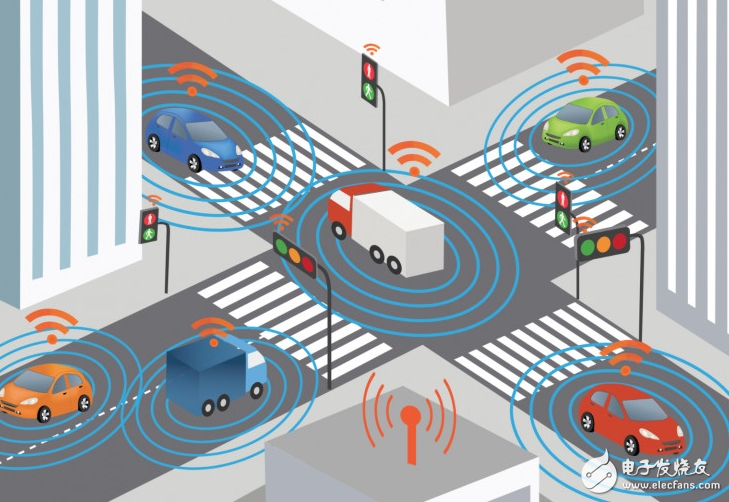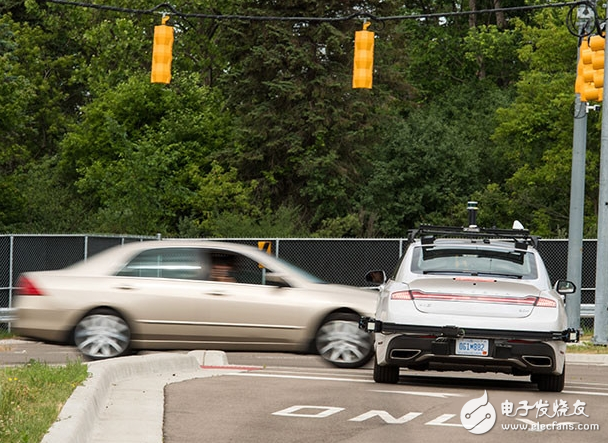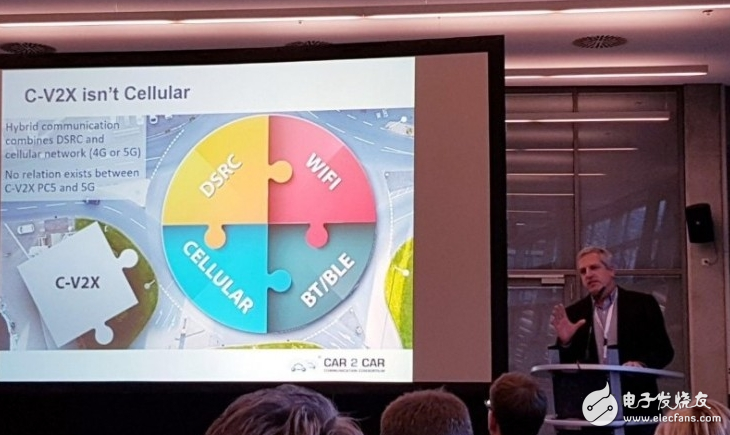Under the influence of the C-Roads initiative, by 2017, many countries had already begun integrating road infrastructure to support ITS-G5 technology. Supporters of highly automated vehicles must not overlook the critical role that vehicle-to-vehicle (V2V) communication plays in enhancing autonomous driving. Communication technologies significantly improve road safety—not only for self-driving cars but also for human-driven vehicles sharing the same roads.
 At first glance, autopilot systems and V2V communication might seem like separate issues, but they are deeply interconnected. Many advocates of full autonomy often paint a utopian picture of a future with zero accidents, yet they rarely address the long, complex transition period ahead. During this time, autonomous and human-driven vehicles will share the roads, facing the same risks.
If the goal of autonomous vehicles is truly to enhance safety, then developers need to focus on bridging the communication gap between machines and humans.
At first glance, autopilot systems and V2V communication might seem like separate issues, but they are deeply interconnected. Many advocates of full autonomy often paint a utopian picture of a future with zero accidents, yet they rarely address the long, complex transition period ahead. During this time, autonomous and human-driven vehicles will share the roads, facing the same risks.
If the goal of autonomous vehicles is truly to enhance safety, then developers need to focus on bridging the communication gap between machines and humans.
 *In one scenario, a human-driven car flashed its lights as an autopilot test vehicle passed through an intersection.*
So, how can we make autopilot vehicles "see" better? One major challenge is that automated systems struggle to predict human behavior. They aren't great at anticipating sudden changes from other drivers, which limits their ability to drive defensively. Moreover, human drivers are often more unpredictable than we realize.
Should we only allow self-driving cars on the road? That’s too idealistic. The reality is that human-driven vehicles will continue to be on the roads, changing lanes abruptly and causing potential hazards.
Another solution is equipping autonomous vehicles with more advanced sensors, giving them a “see-through†capability. But even with the best sensors, they can’t read human minds—something no amount of technology can fully overcome.
*In one scenario, a human-driven car flashed its lights as an autopilot test vehicle passed through an intersection.*
So, how can we make autopilot vehicles "see" better? One major challenge is that automated systems struggle to predict human behavior. They aren't great at anticipating sudden changes from other drivers, which limits their ability to drive defensively. Moreover, human drivers are often more unpredictable than we realize.
Should we only allow self-driving cars on the road? That’s too idealistic. The reality is that human-driven vehicles will continue to be on the roads, changing lanes abruptly and causing potential hazards.
Another solution is equipping autonomous vehicles with more advanced sensors, giving them a “see-through†capability. But even with the best sensors, they can’t read human minds—something no amount of technology can fully overcome.

 At first glance, autopilot systems and V2V communication might seem like separate issues, but they are deeply interconnected. Many advocates of full autonomy often paint a utopian picture of a future with zero accidents, yet they rarely address the long, complex transition period ahead. During this time, autonomous and human-driven vehicles will share the roads, facing the same risks.
If the goal of autonomous vehicles is truly to enhance safety, then developers need to focus on bridging the communication gap between machines and humans.
At first glance, autopilot systems and V2V communication might seem like separate issues, but they are deeply interconnected. Many advocates of full autonomy often paint a utopian picture of a future with zero accidents, yet they rarely address the long, complex transition period ahead. During this time, autonomous and human-driven vehicles will share the roads, facing the same risks.
If the goal of autonomous vehicles is truly to enhance safety, then developers need to focus on bridging the communication gap between machines and humans.
 *In one scenario, a human-driven car flashed its lights as an autopilot test vehicle passed through an intersection.*
So, how can we make autopilot vehicles "see" better? One major challenge is that automated systems struggle to predict human behavior. They aren't great at anticipating sudden changes from other drivers, which limits their ability to drive defensively. Moreover, human drivers are often more unpredictable than we realize.
Should we only allow self-driving cars on the road? That’s too idealistic. The reality is that human-driven vehicles will continue to be on the roads, changing lanes abruptly and causing potential hazards.
Another solution is equipping autonomous vehicles with more advanced sensors, giving them a “see-through†capability. But even with the best sensors, they can’t read human minds—something no amount of technology can fully overcome.
*In one scenario, a human-driven car flashed its lights as an autopilot test vehicle passed through an intersection.*
So, how can we make autopilot vehicles "see" better? One major challenge is that automated systems struggle to predict human behavior. They aren't great at anticipating sudden changes from other drivers, which limits their ability to drive defensively. Moreover, human drivers are often more unpredictable than we realize.
Should we only allow self-driving cars on the road? That’s too idealistic. The reality is that human-driven vehicles will continue to be on the roads, changing lanes abruptly and causing potential hazards.
Another solution is equipping autonomous vehicles with more advanced sensors, giving them a “see-through†capability. But even with the best sensors, they can’t read human minds—something no amount of technology can fully overcome.

*Autotalks CEO Hagai Zyss
Hagai Zyss, CEO of Autotalks, has strong opinions on these challenges. At the Detroit North American International Auto Show in early January, he emphasized that the main issue lies in the lack of effective information exchange between autonomous and human-driven vehicles. He added, “Car manufacturers recognize the need for a dedicated V2V communication system. This is another layer of safety that can save lives today.†Unfortunately, the conversation around vehicle-to-everything (V2X) communication has been dominated by mobile network advocates like Qualcomm. The debate has shifted toward choosing between DSRC (Dedicated Short Range Communications) and 5G, rather than focusing on the core objective: safety. While some believe 5G will replace DSRC entirely, others argue that DSRC is still essential due to its low latency requirements. However, a key question remains: Can 5G provide the necessary speed and reliability for real-time V2V communication? To date, no 5G-based navigation system has been tested for V2V applications. The market is flooded with conflicting opinions, creating confusion and shifting focus away from the real goal: making roads safer. Zyss pointed out, “We can start saving lives today, but we’re waiting for a technology—5G—that hasn’t even arrived yet.†It’s worth noting that Autotalks supports a hybrid approach, where both DSRC and cellular technologies coexist. While automakers are already using LTE for cloud connectivity, Zyss believes that cellular V2X (C-V2X) won’t replace DSRC. Moreover, 5G networks are still in development, and their ability to synchronize devices quickly is not yet proven. The synchronization model required for high-speed V2V communication is fundamentally different from what cellular networks currently offer. Some industry insiders argue that 5G supporters are repeating the same mistakes that DSRC advocates once made. They’re trying to replicate past efforts without addressing the limitations of cellular networks in terms of efficiency and timing accuracy. Zyss believes that if autonomous taxis are to become widely available by 2019 or 2020, the industry must prioritize a safe, dedicated communication layer that works for both autonomous and human-driven vehicles.Xenon Lamp Aging Test Chamber,Xenon Lamp Aging Light Tester,Photovoltaic Module Test Box,Xenon Lamp Aging Testing Machine
Wuxi Juxingyao Trading Co., Ltd , https://www.juxingyao.com